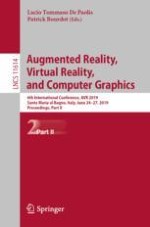2019 | OriginalPaper | Chapter
A Study on Female Students’ Attitude Towards the Use of Augmented Reality to Learn Atoms and Molecules Reactions in Palestinian Schools
Authors : Ahmed Ewais, Olga De Troyer, Mumen Abu Arra, Mohammed Romi
Published in: Augmented Reality, Virtual Reality, and Computer Graphics
Publisher: Springer International Publishing
Activate our intelligent search to find suitable subject content or patents.
Select sections of text to find matching patents with Artificial Intelligence. powered by
Select sections of text to find additional relevant content using AI-assisted search. powered by
